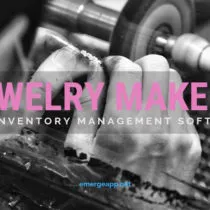Inventory Headaches? 3 Ways to Relieve Your Pain

Organisation of your inventory depends heavily on the nature of the stock, stock movement and the quantity of stock that you’re dealing with.
Clearly, a small business owner will manage stock differently from a multinational business that handles hundreds of transactions per day.
Before organising your inventory, you need to first understand why do you even need to sort it out in the first place.
Regardless of size and purpose, there are some good inventory management habits that everyone can adopt to ensure your company stays on top of your inventory:
Have a system when managing your stock.
To begin, create a system where you can ensure that all your physical stocks are counted and recorded in an excel sheet with proper SKUs (Stock Keeping Unit).
If you are buying in bulk and breaking bulk when selling, it can be advisable to break and categorise your products according to your smallest SKU.
This is to ensure that when the time comes to distribute your product, less time is wasted doing another round of stocktaking.
If your product comes with barcodes printed in SKU, use that.
But if you are buying the same product from different suppliers and if it comes in a different SKU, it is advisable to assign your own SKU and indicate on your product either through the printing of barcode or writing.
This step can be time-consuming and complex, especially for smaller businesses with no prior experience.
Real-time costing, regardless if you’re running on an averaging or First In First Out (FIFO) system will be very difficult to obtain without a use of an order, purchase & inventory management software.
This comes from our experience as a former trading and distribution company, as well as the feedback from many of our existing merchants.
Keep a constant eye on your records
Assuming you own one warehouse, the most basic set-up would be to have two trays: one for incoming documents and one for outgoing documents.
All inventory movement needs to be accompanied by any one type of document – Acquisition, Delivery order or an Exchange/Return document.
Additionally, you should task someone to update the excel sheet daily or weekly for all incoming and outgoing stocks (including exchanged or returned items), depending on the frequency of movement of goods.
Keep a master list of your inventory updated at all times to ensure you have vision on everything that’s going on in the warehouse.
If you’re operating in a team, ensure all employees understand and stick to the process.
No products should be taken or placed into your inventory without a document. This is to ensure there is a paper trail to every single product that enters or leave your warehouse.
Alternatively, as software solutions become more popular, it can be viable and more cost-effective for you or your team to adopt a suitable software to manage your inventory.
Points to note here would be to decide what aspect of the software is most important to you. Is it user-friendliness? Or workflow flexibility? Or rather the cost? All these factors are factors to consider when deciding on a software solution.
Do frequent stocktakes
Stocktaking is a time-consuming process but a necessary one to understand the facts and figures happening in real time. Ideally, it should be done monthly or bi-monthly.
The stocktaking process is often very unique to each company, as employees all have different ways to visualise and count inventory.
Generally, most companies print out the consolidated spreadsheet of all stock and start manually counting inventory and checking it against the spreadsheet.
Pay very strong attention if the discrepancy between your physical and on-paper inventory is above 10%.
This signifies that there is a lapse in your inventory management process and you have to carry out some investigative duties to reduce it moving forward.
Conclusion:
In conclusion, we acknowledge that traditional inventory management is time-consuming but necessary to ensure that companies have the required information to make decisions.
At EMERGE App, one way we have had success was to set up a Key Performance Indicator (KPI) for discrepancy levels and incentivise our them whenever they hit those targets. This keeps us motivated to ensure accuracy and makes inventory management fun.



